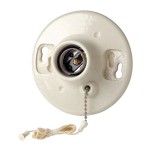An In-Depth Guide to Essential Aspects of Fluorescent Ceiling Light Lens
Fluorescent ceiling light lenses play a pivotal role in commercial and industrial lighting applications. They serve multiple functions, including light distribution, glare reduction, and energy efficiency. Understanding the essential aspects of fluorescent ceiling light lenses is crucial for optimizing lighting performance and creating a comfortable, productive environment.
Light Distribution:
Fluorescent ceiling light lenses determine how light is distributed within a space. Different types of lenses offer varying beam angles, from narrow to wide, which can be tailored to specific lighting needs. For general illumination, wide-beam lenses provide uniform light distribution, while narrow-beam lenses can focus light on specific areas, creating targeted illumination.
Glare Reduction:
Glare is a common problem in fluorescent lighting, causing discomfort and visual fatigue. Fluorescent ceiling light lenses help reduce glare by redirecting or diffusing light. Prismatic lenses, with their angled surfaces, refract light, effectively reducing glare and improving visual comfort.
Energy Efficiency:
Specifying the right fluorescent ceiling light lens can enhance energy efficiency. Lenses with high transmittance values allow more light to pass through, minimizing light loss and reducing energy consumption. Additionally, microprismatic lenses can increase light output by up to 20%, further enhancing energy savings.
Material and Durability:
The material used for fluorescent ceiling light lenses affects their longevity and performance. Polycarbonate lenses are commonly used due to their impact resistance and durability. Acrylic lenses offer excellent light transmission and UV resistance, but may be less durable than polycarbonate.
Maintenance and Cleaning:
Regular maintenance and cleaning are essential to ensure optimal performance of fluorescent ceiling light lenses. Dirt and dust accumulation can reduce light output and affect glare control. Lenses should be cleaned periodically with a soft cloth and mild detergent, ensuring they are not scratched or damaged during cleaning.
Installation Considerations:
Proper installation is critical for maximizing the effectiveness of fluorescent ceiling light lenses. The lens should be securely attached to the fixture and aligned correctly to achieve the desired light distribution. Using compatible lenses and fixtures is essential to ensure a stable and efficient lighting system.
Conclusion:
Fluorescent ceiling light lenses are essential components of commercial and industrial lighting applications. Their ability to control light distribution, reduce glare, enhance energy efficiency, and ensure durability makes them a crucial element in creating comfortable, productive environments. By understanding the essential aspects of fluorescent ceiling light lenses, you can make informed decisions and optimize the performance of your lighting system.

Prismatic Lens Vs Parabolic Louver For Office Lighting Make Great Light

Lithonia Lighting 1 2 Ft X 4 Wraparound Clear Prismatic Lens D2lb48 The Home Depot

Drop Lens Fluorescent 2 Light 6 75 Inch White Flush Mount Ceiling

Led Fluorescent Light Covers For Ceiling Lights

Ceiling Light Panels At Com
Ceiling Light Fixture Diffuser 4 Ft Wide Cover Replacement Fluorescent Lens

Ceiling Light Fixture Diffuser 4 Ft Wide Cover Replacement Fluorescent Lens

Fluorescent Light Covers 1800ceiling

Ceiling Light Panels At Com

Led Fluorescent Light Covers For Ceiling Lights
Related Posts








